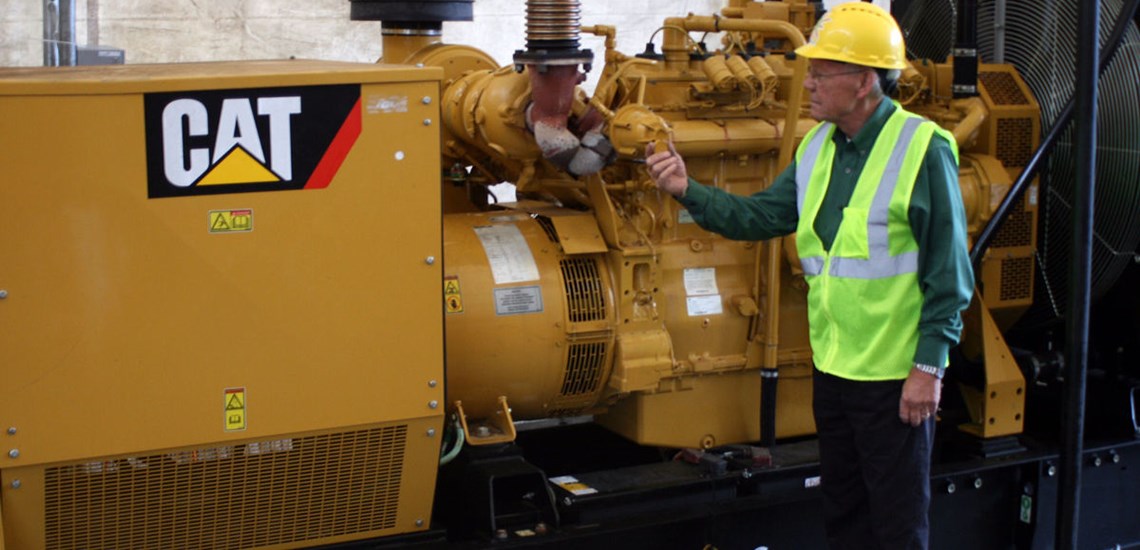Rome, Georgia-based Green Carbon Inc. has partnered with Caterpillar Power Systems to develop a sustainable system from the recycling of old tyres, belting and rubber tracks.
Fusion of Company Resources to Utilise Gas By-Product
Called a Bio-cogeneration System, Green Carbon’s Thermal Vacuum Reactor System utilises a custom designed generator produced by Caterpillar to capture a synthetic gas by-product of the recycling to power the generator.
“We were looking for a way to use the excess gas that is produced in the system in an environmentally friendly way,” said Green Carbon co-founder Phil Wilson. “I approached not only Caterpillar, but several other companies and Caterpillar was the one that was able to develop the generator so that it would work off our gas.”
The generator is a variation of one of Caterpillar’s existing generators, adapted tyo burn the off-gas from Green Carbon’s process.
“Essentially you could put it out in the middle of a corn field and run it without anything else, except for the tyres,” said Andrew Taylor, environmental management system for Green Carbon Inc. “It’s perpetual, the whole thing is powered by itself as long as you keep putting tyres in.”
Green Carbon Inc. is a co-owned company with OTR Wheel Engineering of Rome. OTR has had a long relationship with Caterpillar.
“They got with us and we finally got the design right, and we finished all the testing and now have a massive natural gas-burning generator. They cut off the external power and it runs off itself,” Taylor said. “The entire system produces its own energy and never needs any kind of virgin material, meaning natural gas or diesel or electricity from an external source.
A half dozen of the units are in use at Fort McMurray in the area of oil sands in extreme northern Alberta, Canada. The reactors are used to recycle massive earth-moving and mining tyres.
A 63-inch tyre, can be reduced to 588 gallons of oil, 3,500 pounds of carbon black and 1,500 pounds of steel. The largest reactor can burn two of those tyres at the same time in a process that takes 16 hours from start to finish. The process also produces and captures more gas than it takes to fuel the process.
“Our latest units that are operating in Fort McMurray are producing about 180 percent of the synthetic gas that is required to run the process,” Wilson said. “There is an enormous surplus of gas which in the winter they can use for heating, but in the summer they just have to store it. Co-generation will use that gas up supplying not only the power they need to run their plant but also sell it back to the grid.”
Co-founder Fred Taylor has indicated that each of the large reactors is capable of eliminating enough tyres to result in the creation of about 36,000 gallons of oil.




















